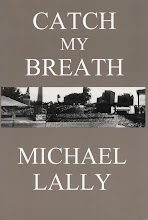I watched the movie WYATT EARP the other night and went to bed thinking about my favorite films on the life and legend of Wyatt Earp. The first one I fell in love with as a boy was John Ford's MY DARLING CLEMENTINE.

What makes all these movies work is the relationship between Earp and "Doc" Holliday, his famous pal, and cohort at the crucial incident of Earp's legend, the gunfight at the OK Corral.
Henry Fonda plays Earp and Victor Mature is an unlikely Holliday. The contrast is probably the most extreme of any movie pairing of these two historical figures. Fonda's quiet charisma as usual anchors the film, and along with Ford's black and white photography of iconic Western landscapes, makes the film a classic. But helping make this film unique is Mature's performance.
He's an actor who seems odd looking today but was considered a "hunk" at the time and was usually relegated to playing tough guys, whether the Biblical Samson or
film noir thugs trying to go good. So the tuberculosis ridden "Doc"—a role that demands vulnerability—was probably the best acting he did in his career. He matches Fonda's minimalist style with his own brooding hulk of a performance and brings the relationship to unexpected levels of emotional revelation. (Linda Darnell adds her too often underrated star power to the mix making it even tastier.)
 GUNFIGHT AT OK CORRAL is saturated with garish 1950s Technicolor melodramatic camera work, let alone scripting, but the sparks between Burt Lancaster as Earp and Kirk Douglas as Holiday make it one of the most fun movie pairings ever, on a level with Redford and Newman in BUTCH CASSIDY AND THE SUNDANCE KID.
GUNFIGHT AT OK CORRAL is saturated with garish 1950s Technicolor melodramatic camera work, let alone scripting, but the sparks between Burt Lancaster as Earp and Kirk Douglas as Holiday make it one of the most fun movie pairings ever, on a level with Redford and Newman in BUTCH CASSIDY AND THE SUNDANCE KID.
It doesn't have the gravitas of MY DARLING CLEMENTINE or the beauty of Ford's camera work and black and white artistry, but the lead performances make it a totally engaging if highly unlikely version of the legend.

The two more contemporary—well, from the '90s—versions of the Earp story came out within six months of each other. TOMBSTONE won by being first and having Val Kilmer's performance as "Doc" Holliday. He comes very close to stealing the movie, and certainly gives either the hammiest or the most original (or both) portrayals of the character.
But for my taste the underrated Kurt Russell pulls of his version of Earp pretty well and holds the movie together, despite the difficulty of making what was intended to be a more realistic depiction of Earp's actual life engaging.
I still find it totally watchable and am always impressed with how deeply Kilmer committed to his extremely mannered interpretation of Holliday. It definitely works, as most of Kilmer's performances do, unexpectedly and impressively, despite, or because of, his over-the-top style.

WYATT EARP is the version I watched the other night and was certain I'd seen when it came out (since I've been seduced by the Earp story since I was a boy) but could only remember some early scenes and some scenes at the end in what is almost a three hour saga attempting to hit every major incident in Earp's life.
But I was totally engaged, and though Kevin Costner as Earp disappointed some critics with his stoic but to me realistic portrayal, he kept me watching. As did Dennis Quaid with an equally mannered performance as Kilmer's and yet in surprising ways original. When he first appears on screen my initial reaction was disbelief. Is he really trying to pull this overblown performance off.
But as the film progressed Quaid's commitment was so complete I began to buy his performance and eventually accept it as a true portrait of the real Holliday, or at least as interesting and at times enlightening as the other three versions above.
Truth is, I could watch any of these movies when they turn up on cable and feel satisfied, like I enjoyed another fulfilling movie-watching experience, whether escape or not. Or why not?

































































